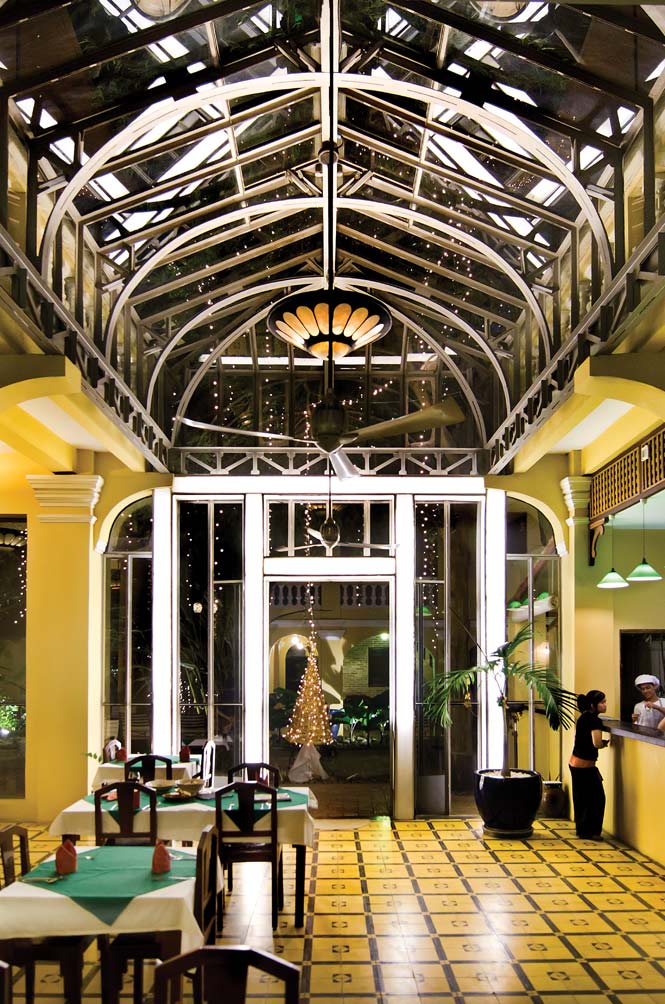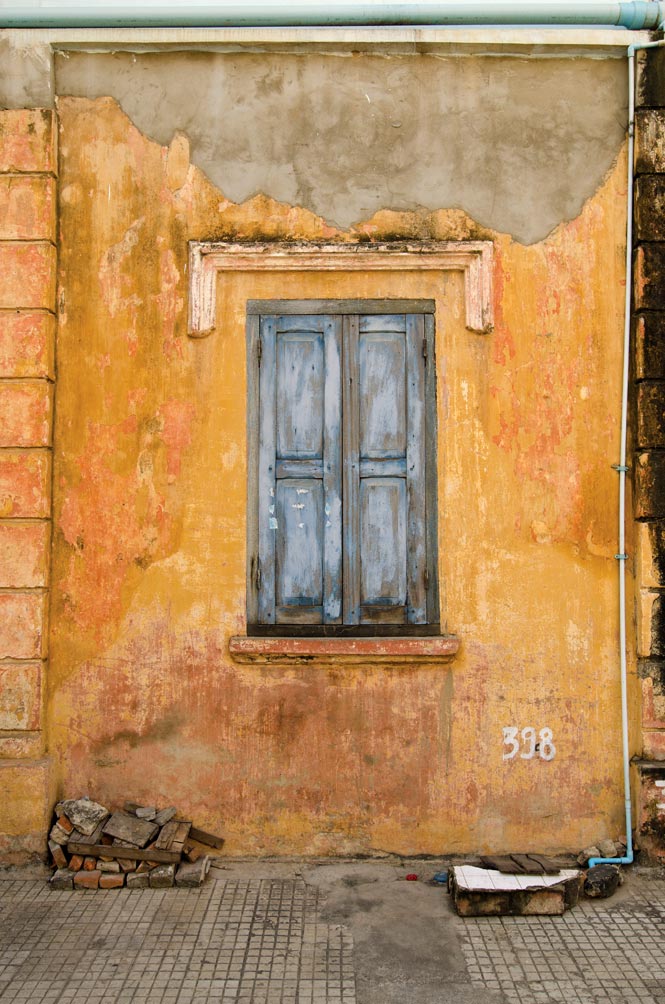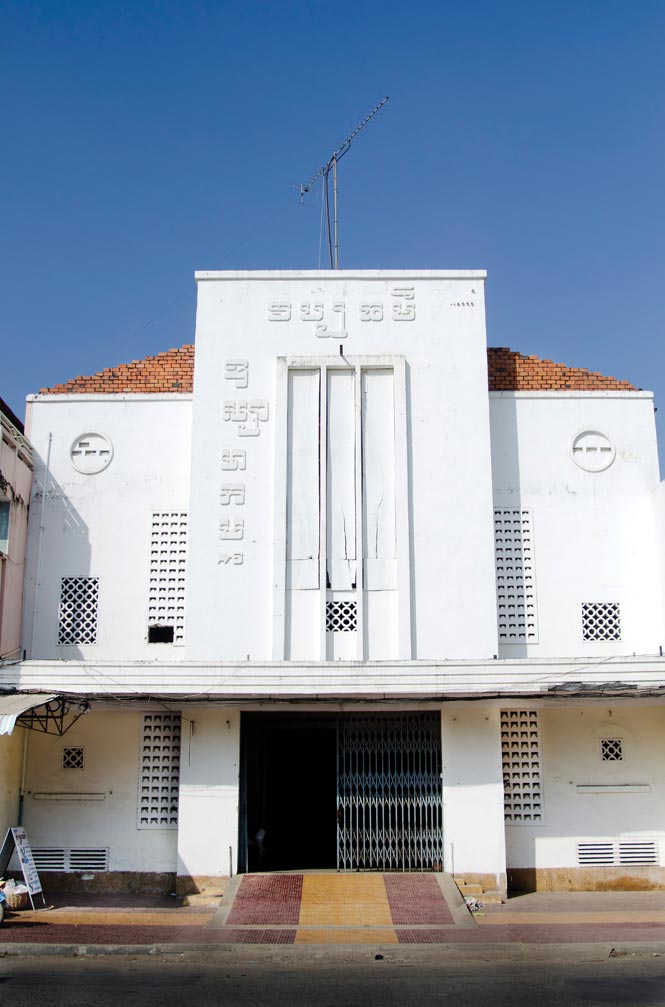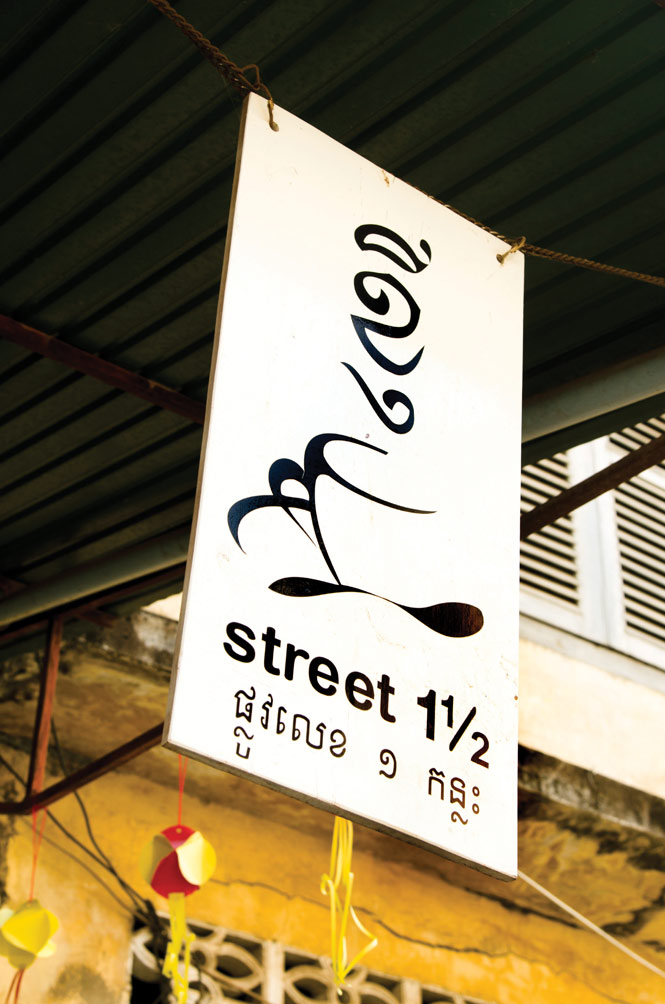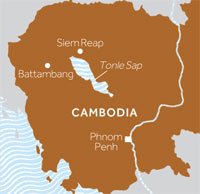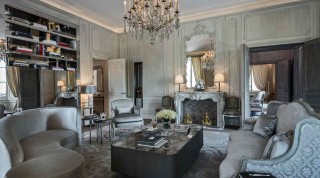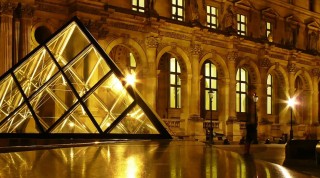“The present rubs out the past,” I’m told later by Top Tan Leang, director of the Battambang Provincial Museum. “If we don’t have regulations to preserve this, I think they are all at risk.” More troubling than the ad hoc additions are the rubble-strewn lots of recently demolished buildings. Pausing beside a corner lot where a French-era shophouse once stood, Sak says, “I came by here and tried to stop them, but it was too late. The owners promised to re-build in the same shape.” He shrugs. “I don’t think they will.” Ugly signs and billboards present another eyesore, blocking facades with advertisements for cosmetics and fashion brands. Even the government has been a culprit. In 2000, the then-governor of Battambang erected an incongruous wall and gate in the elaborate style of Banteay Srei, a 10th-century Angkor temple, obscuring the street view of the Sala Khaet.
And yet, there have been several standout restorations. A corner villa on Street No. 1 that once served as a pawnshop and a radio station has been renovated and repurposed as the Battambang branch of the National Bank of Cambodia. Almost directly across the Sangker River, another private villa from the 1930s has been restored by an expatriate French couple and converted into La Villa, a seven-room boutique hotel filled with Art Deco furniture and period fixtures.
The first step toward preserving more structures, says deputy municipal governor Sieng Em Wounzy, is public awareness. In early 2010, he invited people from 600 households within the heritage zone to a public meeting, where he spoke about the benefits of preservation and distributed posters illustrating some of Battambang’s best—and worst—architectural examples. Signage regulations have also been drafted forbidding any new billboards. Residents within the conservation area will have to apply for permits to carry out any new construction or renovations, Wounzy adds, with the city providing technical advice.
Does he really expect these rules to be followed?
“I’m very proud of our efforts so far. People have started to realize how important the heritage buildings are. It’s in the common interest, after all.”


